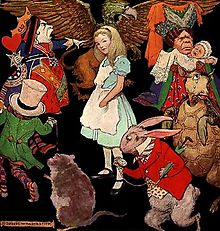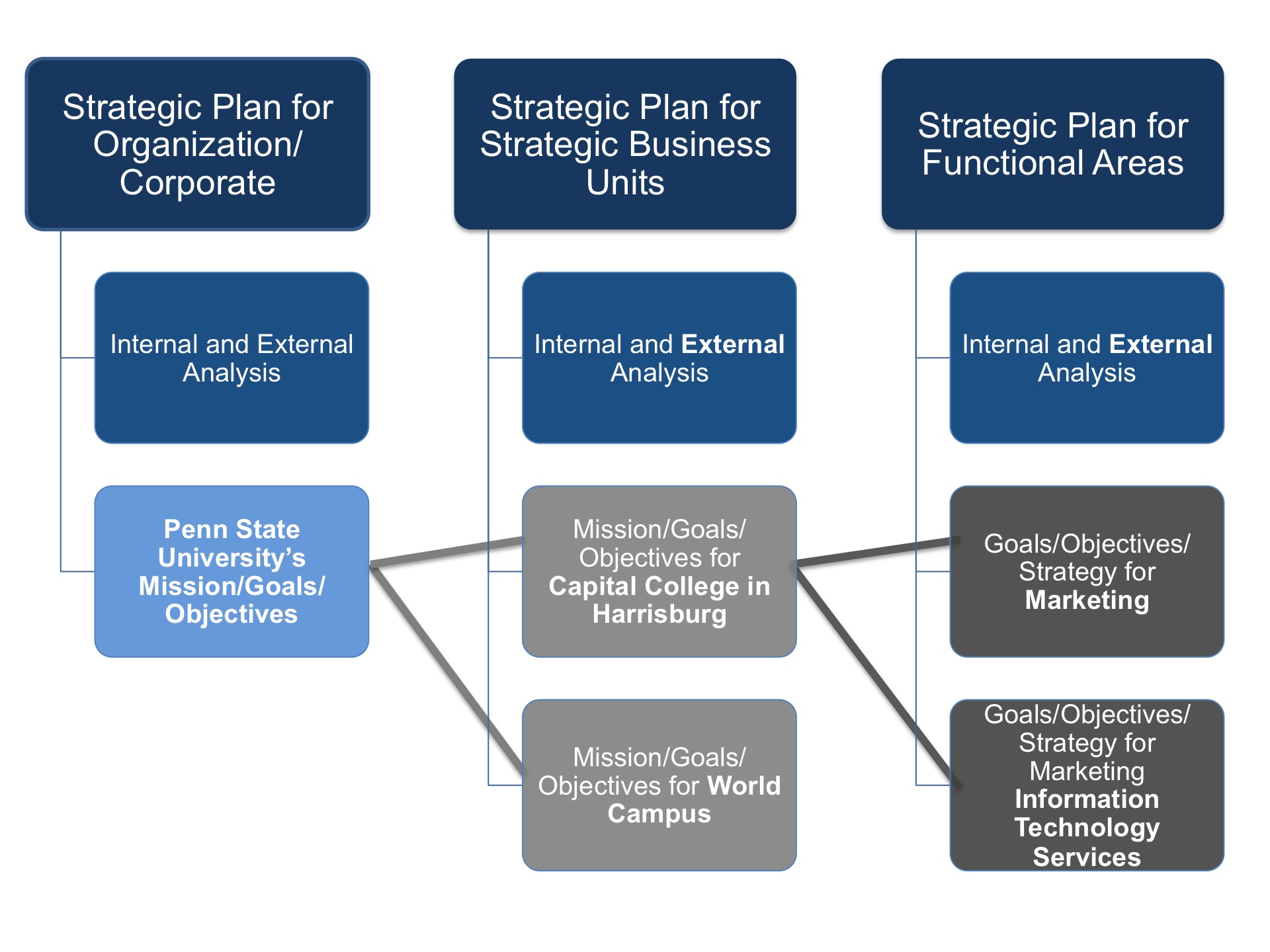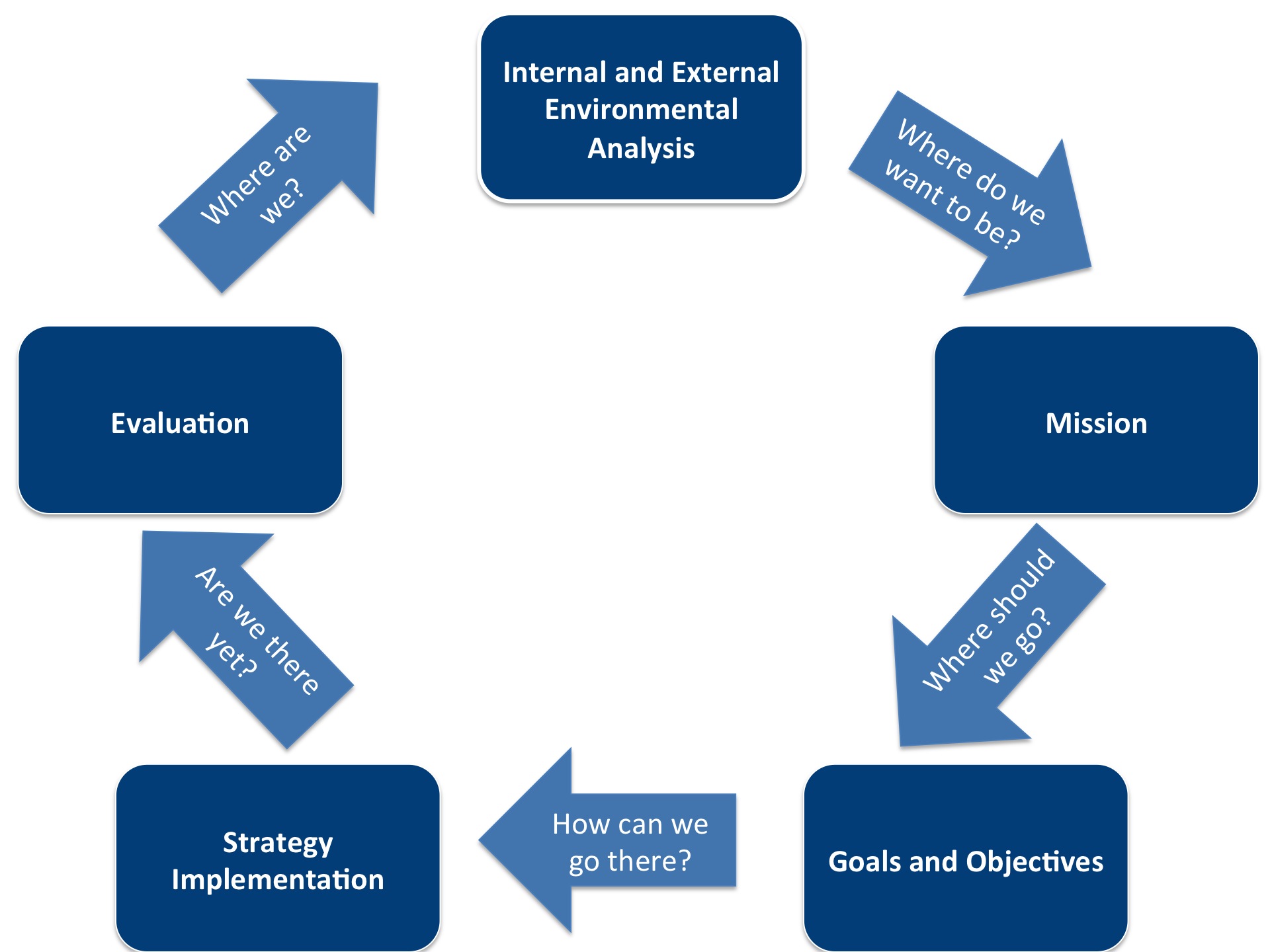Main Content
Lesson 2: Marketing Strategy Planning
General Logic of Strategic Planning

"Would you tell me, please, which way I ought to go from here?"
"That depends a good deal on where you want to get to," said the Cat.
"I don't much care where—" said Alice.
"Then it doesn't matter which way you go," said the Cat.
"—so long as I get somewhere," Alice added as an explanation.
"Oh, you're sure to do that," said the Cat, "if you only walk long enough."
In the mad world of Wonderland, poor Alice does not know where she is going, what to do, or where to go. Lucky for you, students of marketing, you are in a much better situation! You will decide what your marketing goals and objectives are and then decide how to get there by planning appropriate marketing activities. This is what we call strategic marketing planning. So you will know where to go, how to get there, and when you've arrived!
Process of Strategic Planning
The process of strategic planning involves setting goals, objectives, and ways to reach them. In a nutshell, you decide on your most general goals and strategies first, and then you get more specific. Also, typically, the most general decisions are made at the corporate (top) level of the organization (for example, by the CEO); the middle and lower-level managers are responsible for specific action plans. As such, they deal with divisional (the Product Market unit) level, and functional (the Strategic Business unit) level issues.
For example, Penn State will formulate a strategic plan, and then its strategic business units, such as PSH (Penn State Harrisburg) Capital College or the Penn State World Campus, will formulate their own strategic plans in light of and in line with those of the whole University. Strategic plans for functional areas, such as marketing or information technology services, will follow the general strategic plan. Figure 2.1 below illustrates the process (Although the figure for illustrative purpose includes only PSH Capital College and the World Campus, there are more business units at Penn State beyond those two).

When deciding on where you are going and how you will get there, it is important to first define who and what you are and what you generally do. One can call this an organization's mission and vision statement(s).
Obviously, the strategy chosen depends on careful and thorough analysis of the internal environment as well as the external environment (the political, legal, technological, economic, cultural, and natural forces pertinent to the business along with information about the company's or the organization's customers, competitors, and other stakeholders). This is conducted by a PEST (political, economic, social, and technological) Analysis.
Your destination needs to be defined in such a way that you will know when you get there! In other words, your goals and objectives need to be specific, measurable, and clearly stated and defined. For example, compare two bread product companies. Company A sets a goal of "to get people to buy our new bread products," and Company B sets a goal of "to obtain 5% of fresh baked bread market in one year." Which company's objective do you think will produce better and clearer outcomes?
Often, an organization will set its marketing objectives in terms of actual sales amounts or market share and sales growth—for example, stating that the company wants to be a leader (have the highest market share in the market), to stimulate 30% Harrisburg consumers to try one loaf of fresh-baked bread, to increase its existing market share by 18%, or a commitment to grow in the baked-goods market as much as twice as last year, or to gradually increase the budget up to $1 million, $2 millions, and $3 millions in the next three years.
Also, keep in mind that this sequence is not totally set in stone. We say that we start with the mission statement, but you could make the philosophical argument that even mission statements are impossible to develop without knowing something about the environment. It seems to me, though, that the real conversation about our situation takes place at the stage where we decide what we are really trying to achieve.
For example, if I decide that I want to be a trainer, the logic would apply like this:
- I would state my mission, something like "to help people get stronger and healthier."
- Second, I would research the training market to figure out the changes and developments taking place. After conducting research on the state of the training market, my objective would be something like, "I will aim to attract about 20 clients who would see me about once a week."
- Third, I would look at the data even more and figure out that the best way for me to achieve my objective would be to deal with older people (my target market); what I can offer them is strength training, healthy life style, and restoring mobility (the product/service feature). The best way to reach the target market would be to put an ad in the AARP magazine, stating that each training session should be about $50, and so on. Of course, after doing that for a little while and gaining some real sense for what I am doing for my target market, I would reformulate the mission statement to say something like "I help people be happy, active, mobile, and independent through strength training."
Here's the thing: As with any process, it is never just A through Z and that's it. We look back, evaluate, re-evaluate, and change things as needed. When trying to explain how it works, though, we first need to understand the A–Z (Figure 2.2).

References
Carroll, L. (1865). Alice's adventures in wonderland. In Alice's adventures in Wonderland and through the looking-glass (2010 ed., pp. 7–115). New York, NY: Simon & Schuster, Inc.
